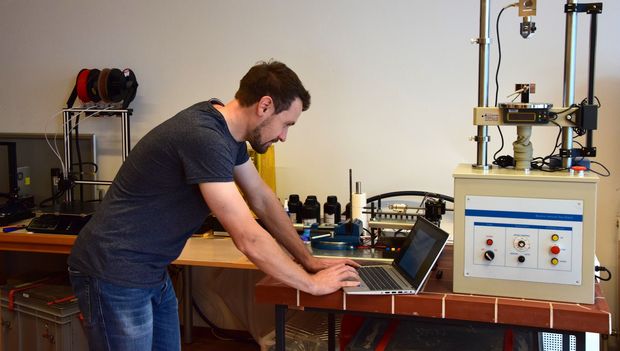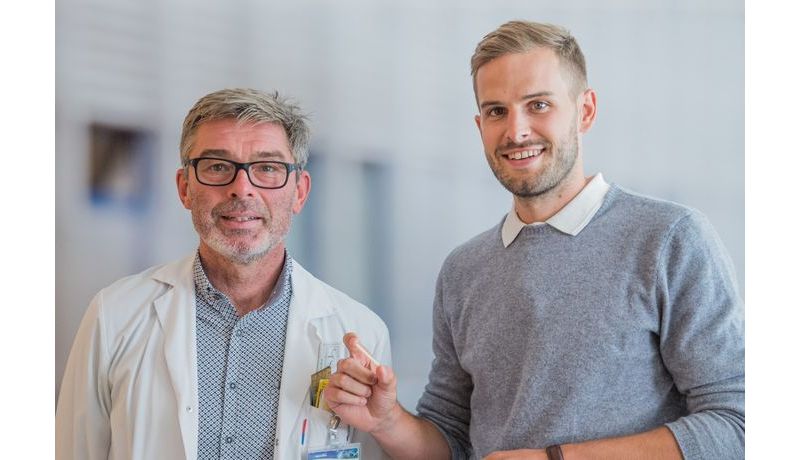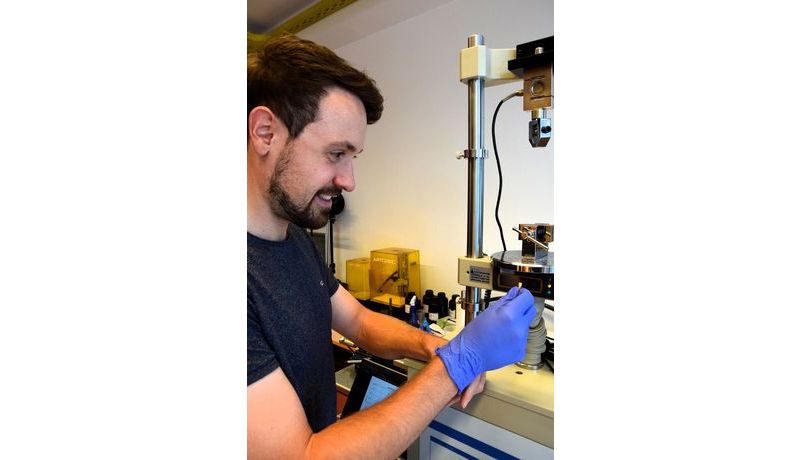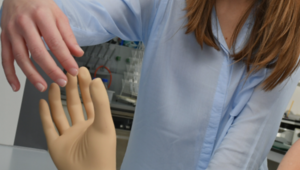Be it during a sporting activity or simply as a result of an awkward motion: ACL tears are more common than one might think.

The Johannes Kepler University Linz partnered with surgebright and the District Hospital in Schwaz, Tyrol, to develop a new type of bone screw that will soon replace existing screws.
ACL repair using interferential screws is a common surgical procedure. These screws are usually made of metal (mainly titanium), or bioresorbable materials, such as plastic or ceramic. In both cases, they are considered foreign bodies and complications may occur.
Prim. Dr. Markus Reichkendler (District Hospital in Schwaz) remarked: "Every year, at our hospital alone, we treat hundreds of patients with torn ACLs. Using plastic screws that have been designed to dissolve later is very common. This dissolution process, however, often leaves behind large bone defects, known as osteolysis. Should the ACL tear again, patients and surgeons face issues that may be difficult to resolve. These bone imperfections mean that the ACL won’t hold." An alternative is now screws made out of bone, such as those manufactures by surgebright in Lichtenberg (Upper Austria).
Bone material is implanted into the body
Thomas Pastl, the managing director at surgebright, remarked: "Screws made out of human bone are then colonized by the body's own bone cells and converted into the body's natural bone, making osteolysis a thing of the past. Referred to as a ‘shark screw’, the process has already been proven in a number of publications in leading international journals." The bone screws are sterilized to guarantee maximum patient safety. He added: "This Austrian innovation is a major milestone, not only for surgeons and patients, but also the global healthcare system."
The fact that screws made out of bone function exceptionally well is a well-known fact and has been used thousands of times a year as part of everyday clinical practices. Until now, however, very few bone screws have been technically viable to treat torn ACLs as they were either too small, could not withstand the required torque, or were so large that the screw head had to be sawn off once it was placed in the body.
This is where the JKU's Institute of Biomedical Mechatronics stepped in. Prof. Dr. Werner Baumgartner, head of the institute, stated: "We discussed the problem together and then created specially designed screws. Finally, after tearing an ACL, the shape of the screw and the thread makes it possible to use these screws to attach ACL implants." This involved both extensive calculations and countless hands-on trials.
DI Sebastian Lifka (Institute of Biomedical Mechatronics at the JKU) added: "In the end, we did it and the new screw proved itself during the trials."
Plans to conduct a clinical study
These new screws are not only particularly well suited to treating torn ACLs, they are more physically compatible, and heal faster. The new procedure using the special screws has already been published in the renowned journal "Bioengineering". There are plans to conduct a clinical study in order to scientifically analyze the screws’ effectiveness so they can soon be available to patients who experience torn ACLs.













